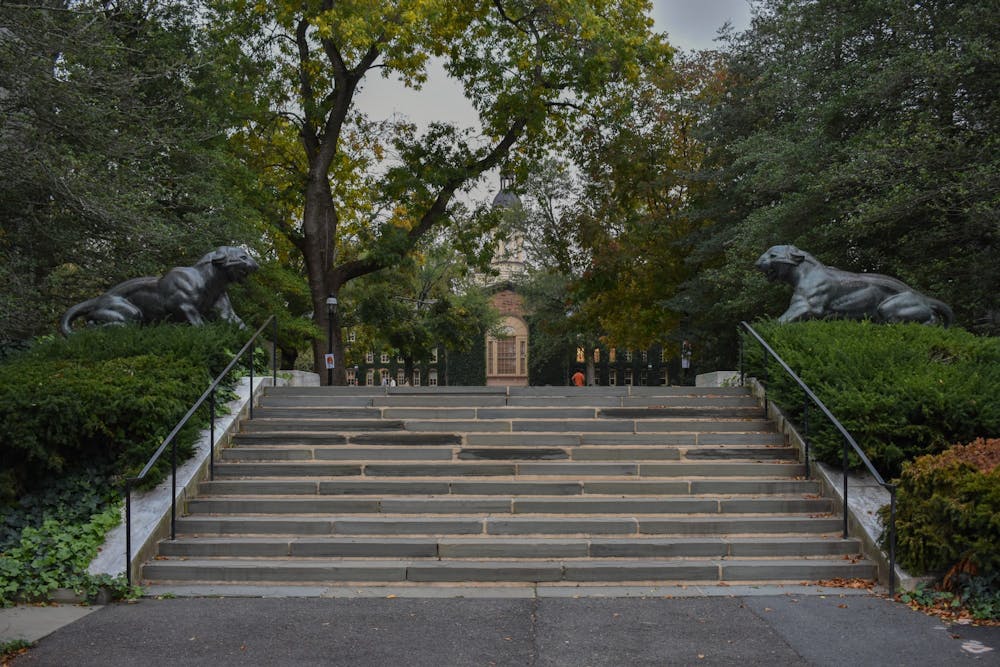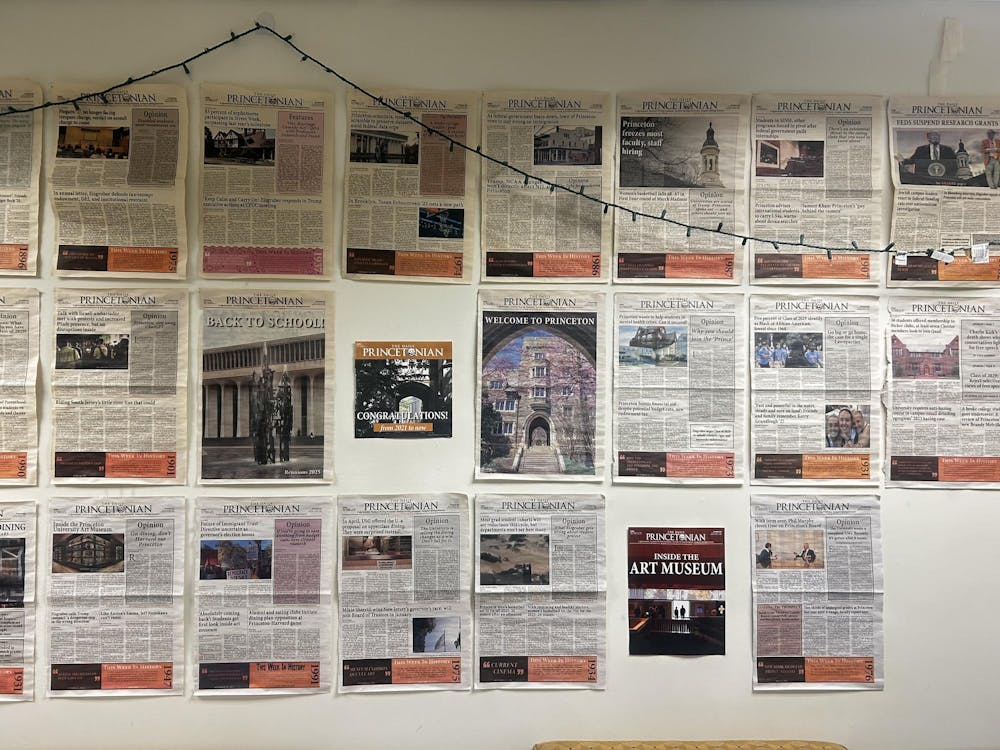The following is a guest contribution and reflects the author’s views alone. For information on how to submit an article to the Opinion section, click here.
While America and the world were shocked at the murder of George Floyd by four police officers, they should not have been. The brutal murder was a result of the continued legacy of racism founded in the belief in white racial superiority. The protests of George Floyd’s public execution led to more than 500 School of Public and International Affairs (SPIA) current students and alumni signing a June 23, 2020 petition and over 300 members of Princeton’s faculty calling for an anti-racism center in their July 4, 2020 petition.
In response to President Eisgruber’s clarion call to the Princeton community on June 22, 2020 to combat and eliminate systemic racism, a coalition of Concerned Black Alumni of Princeton (CBAP) and other stakeholders are calling for the establishment of an academic applied research center to develop real world solutions and focus on racism beyond Princeton and not just at our own institution.
As President Eisgruber highlighted with searing intensity in his Letter of Sept. 2, 2020, the “outrageous and awful violence” against Black people, such as the police shooting of Jacob Blake seven times in the back, is at the root of “the long, painful, and ongoing existence of anti-Black racism in America.”
Racism has caused misery and agony for millions of people in the Americas from colonial times to now. Scholars have identified at least four forms of racism — internalized, interpersonal, institutional/systemic, and structural — to capture the breadth of this construct. It is important to identify all forms because each requires specific scrutiny and strategies for resolution. An academic applied research center could not only catalog data, but create policies to address issues such as those reported in a June 2020 Washington Post article on the stagnation of Black wealth: “Higher education has long been touted as a ticket to the middle class, but for Black Americans that has not been as true as one might hope. The typical Black household headed by someone with an advanced degree has less wealth than a white household with only a high school diploma.” Today, the transfer of wealth from minority to majority populations by means of racist policies results in the lack of resources in communities of color. A center would identify restorative measures, define policies, and promote programs to address these issues of institutional and systemic racism.
The residual effects of slavery continue to permeate American institutions, including the institutions of higher education today. Princeton University, as well as many other colonial-era colleges, owe their existence and pre-eminence, to a considerable extent, to slavery — and as a result, have a responsibility to use its resources to combat slavery’s continued effects.
The Princeton and Slavery Project has helped to uncover how deeply involved Princeton was in the despicable institution of slavery. This study revealed that the University’s first nine presidents were slave owners, some of whom lived in the Maclean House while owning slaves — slaves were also auctioned at Maclean House. Slavery played a significant part in campus life and institutional development.
Much of the wealth contributed to Princeton has its roots in the sugar plantations of the Caribbean, the produce plantations of the southern Atlantic and Gulf Coasts, and from the northern mercantile industry. The labor of enslaved people both in the United States of America and abroad enriched numerous donors and, ultimately, Princeton University. The center that CBAP is advocating for will enable Princeton to address its history and take moral leadership and responsibility to confront the vestiges of all forms of racism.

In the Nov. 8, 2017 special edition of Princeton Alumni Weekly (PAW), “Princeton and Slavery: Reckoning with the University’s Past,” an article titled “Princeton and Slavery: Holding the Center” makes it clear that the University “exemplifies the central paradox at the heart of American history … liberty and slavery were intertwined.” Indeed, those ties were so deeply embedded that in 1936 the characterization of Princeton as being the “northernmost outpost of Southern culture” was coined in The Daily Princetonian.
Racism is not a thing of the past — it continues today. The U.S. Department of Justice reports hate crimes have been on the rise. In Pittsburgh on Oct. 27, 2018, 11 congregants were killed in an attack on a Jewish synagogue. In metropolitan Atlanta on March 16, 2021, six of eight individuals murdered were Asian women. On May 14, 2022, 10 people in Buffalo, N.Y., were murdered, all of whom were intentionally targeted because they were Black. These perpetrators were, in our opinion, white supremacists responding to calls for violence in response to the false theory that whites are being replaced by Blacks, other people of color, and those of non-Christian ethnicity.
The idea of a center is not a novel one. Within the Ivy League, many universities have commissioned multidisciplinary examinations of their entanglement with slavery and its vestiges of racism, and acknowledged that they bear a moral responsibility to redress — through teaching, research, and outreach service — the persistent corrosive effects of racial injustice on individuals, on their universities, and on our society.
For example, in 2003, Ruth Simmons, former associate dean of faculty at Princeton and the first Black president of Brown University, commissioned a report to research Brown University’s ties to slavery and the transatlantic slave trade. As a result, Brown University committed to addressing the deep and lasting harms in its university and local Providence communities. One of the initiatives in the “Plan of Action” is to create a center for slavery and justice.

In 2016, Yale University President Peter Salovey announced the creation of the Center for the Study of Race, Indigeneity, and Transnational Migration, a university-wide, interdisciplinary academic research center to advance rigorous innovative research and teaching. In 2021, Yale Law School added the Center for Law and Racial Justice.
In 2019, Larry Bacow, president of Harvard University, announced the Presidential Initiative on Harvard and the Legacy of Slavery, an effort to understand and address the enduring legacy of slavery within their University community. As a result of its findings, in 2022, Harvard University announced a $100 million fund seeking to offer support to the descendants of enslaved Africans and to create a research center on slavery and justice.
In 2020, Cornell University’s president Martha Pollack charged and commissioned the Cornell faculty “to develop a proposal for a center that further strengthens our research and education on systems and structures that perpetuate racism and inequality, and on policies and interventions that break that cycle.” That directive led to the creation of the Racial Justice and Equitable Futures Center at Cornell.
While its peer institutions have taken substantive action to establish centers to address systemic and structural racism, Princeton lags behind. Princeton has not launched an institution-wide initiative that would attract faculty interest in racism research, entice cross-discipline approaches to research, draw graduate student interest in doctoral research, or provide collaborative opportunities for foundation and government grants that support the national concern to address racism.
Instead, we hear from University administrators that Princeton has different processes and that faculty must lead the way for the creation of a center. Faculty have already called for a center in the widely signed petition of July 4, 2020. In addition, under the leadership of President Harold Shapiro, who recognized the need and called for the study of genomics at Princeton, the world-class multidisciplinary Lewis-Sigler Institute for Integrative Genomics was established.
It is time to harness Princeton’s academic and human resources to catalog the impact of racism and to develop solutions and work with governments, nonprofits, and businesses to implement solutions to combat racism.
The recommendations of Princeton University’s Cabinet appear to address aspects of diversity and inclusion at Princeton, but not policies that ensure equity at Princeton and beyond, as the President charged. The Cabinet’s recommendations do not focus on combating “systemic and structural racism.
The Rev. Dr. Martin Luther King Jr. observed this dynamic 55 years ago. “It’s much easier to integrate a lunch counter … It’s much easier to integrate a bus than it is to make quality education a reality … It’s much easier to integrate … a public park than it is to get rid of slums … We have moved from a struggle for decency … to a struggle for genuine equality and this is where we are getting the resistance because there was never any intention to go this far,” he said in May 1967.
Princeton’s intellectual, reputational, and financial resources should be channeled into an institution-wide effort to remedy racial injustice and systemic racism. CBAP implores Princeton University to establish and fund an academic applied research center — a center to eliminate racism — that would research the impact of racism, but also develop concrete solutions based on the vast scholarly research of the faculty, and work with governments, nonprofits, and businesses to combat and eradicate racism.
We urge President Eisgruber to take more meaningful and direct action to create a center that almost 1,000 alumni signatories of the CBAP petition support. We call on Nassau Hall and the Trustees of Princeton University to create an academic applied research center to combat racism. The time is now.
Yina Moore ’79 and Micheal Gunter ’14, co-presidents of CBAP, submitted this piece on behalf of CBAP. They can be reached at yamdandd@msn.com and mgun13@gmail.com, respectively.








